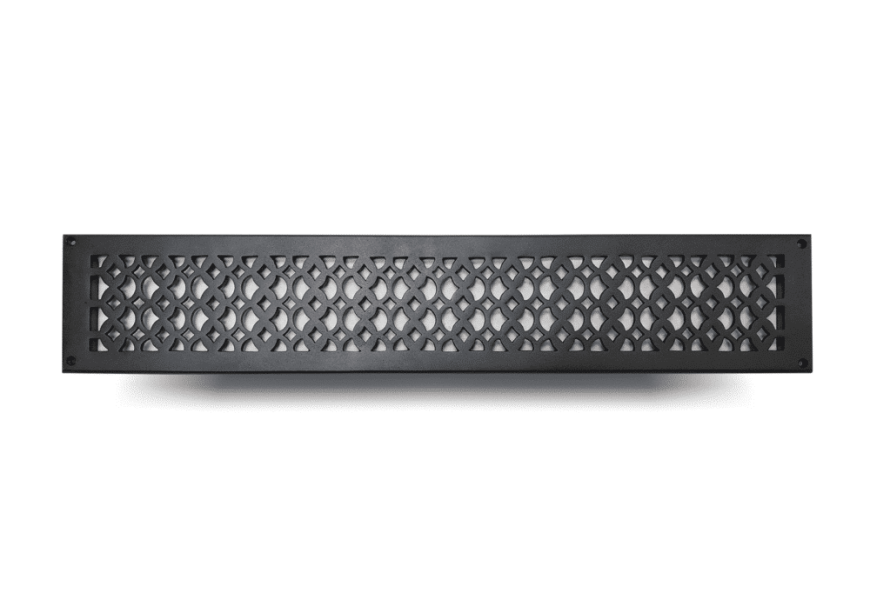When it comes to optimizing your HVAC (Heating, Ventilation, and Air Conditioning) system, many components often go unnoticed despite playing a vital role in ensuring proper airflow, comfort, and efficiency. One such essential yet understated component is the return air grille. In this blog, we’ll explore what return air grilles are, their importance in HVAC systems, how to choose the right one, and maintenance tips to ensure optimal performance.
What is a Return Air Grille?
A return air grille is a vent cover installed over return air ducts in HVAC systems. These grilles allow air to flow from your living spaces back into the system for filtration and temperature regulation. They are typically installed on walls, ceilings, or floors, depending on the design of your HVAC system.
Unlike supply air grilles, which distribute conditioned air into the room, return air grilles pull air out of the room, creating a circulation loop. This continuous air exchange ensures consistent temperatures and better indoor air quality.
Why is a Return Air Grille Important?
Return air grilles serve several critical functions that are vital to the performance and efficiency of your HVAC system:
1. Ensures Proper Air Circulation
For your HVAC system to work efficiently, it must have a consistent flow of air. Return air grilles facilitate this by ensuring that used air is pulled back into the system for reheating, cooling, or filtering. Without proper airflow, the system can become unbalanced, leading to uneven temperatures and higher energy bills.
2. Improves Indoor Air Quality
Air from your home flows back through the return air grille to the HVAC system, where it is filtered before being recirculated. This process helps remove dust, pollen, and other airborne contaminants, ensuring cleaner and healthier indoor air.
3. Reduces System Strain
When return air grilles are properly designed and unobstructed, they allow the HVAC system to operate smoothly. Poor air return flow can force the system to work harder, increasing wear and tear, energy consumption, and the likelihood of costly repairs.
4. Regulates Room Temperature
Return air grilles play a role in balancing temperatures across rooms by ensuring that air is evenly distributed. They prevent hot or cold spots in your home, providing consistent comfort.
Types of Return Air Grilles
Return air grilles come in various designs and materials to suit different applications and aesthetics. Below are the most common types:
1. Standard Return Air Grilles
These are the most basic models, often made of metal or plastic, and come with horizontal or vertical slats. They are functional and affordable, making them a popular choice for residential properties.
2. Decorative Return Air Grilles
For homeowners who want to maintain the aesthetic appeal of their interiors, decorative grilles are an excellent option. They come in a variety of styles, patterns, and finishes, from wood to wrought iron.
3. Filter Grilles
These grilles are equipped with built-in filters that trap airborne particles before air re-enters the HVAC system. They are particularly useful in homes with allergy sufferers or pets.
4. Eggcrate Grilles
Eggcrate grilles are designed with a grid-like structure and are ideal for commercial spaces due to their high airflow capacity and durability.
5. Custom Return Air Grilles
For unique or irregular spaces, custom grilles can be designed to fit specific dimensions while complementing the décor.
How to Choose the Right Return Air Grille
Selecting the right return air grille involves considering several factors to ensure optimal performance and compatibility with your HVAC system. Here’s what to keep in mind:
1. Size and Placement
Measure the dimensions of the return air duct to ensure a proper fit. Placement also matters; wall-mounted grilles are common in homes, while floor-mounted ones are more typical in older systems or specific layouts.
2. Material
Return air grilles are made from various materials, including metal, plastic, and wood. Metal grilles are durable and resistant to wear, while plastic ones are lightweight and affordable. Wood grilles are chosen for their aesthetic appeal but may require more maintenance.
3. Airflow Capacity
Choose a grille with an airflow capacity that matches the requirements of your HVAC system. Too small a grille can restrict airflow, while oversized grilles may compromise efficiency.
4. Filter Compatibility
If you’re concerned about indoor air quality, opt for a grille with a built-in filter. Ensure the filter is easy to access and replace.
5. Aesthetic Considerations
For visible installations, consider a grille that complements the room’s décor. Decorative options can add a touch of elegance to any space.
Installation Tips for Return Air Grilles
Proper installation of return air grilles is critical to their functionality. Follow these guidelines for optimal results:
- Choose the Right Location: Place return air grilles in central locations for effective airflow. Avoid placing them near doors, windows, or heat sources to prevent temperature imbalances.
- Ensure Unobstructed Flow: Keep furniture, curtains, and other objects away from return air grilles to maintain unobstructed airflow.
- Seal the Duct Connection: Use duct tape or mastic sealant to ensure a tight seal between the duct and the grille, minimizing air leaks.
- Professional Installation: For complex systems or custom grilles, consider hiring an HVAC professional to ensure correct installation.
Maintenance of Return Air Grilles
Regular maintenance of return air grilles is essential to keep your HVAC system running efficiently and to maintain good indoor air quality. Here’s how to care for them:
1. Cleaning
- Dust and debris can accumulate on grilles, reducing airflow. Clean them regularly with a vacuum or damp cloth.
- For grilles with filters, clean or replace the filter as recommended by the manufacturer.
2. Inspection
- Periodically inspect grilles for damage, rust, or wear. Replace damaged grilles to avoid airflow restrictions.
3. Check for Blockages
- Ensure that grilles are not obstructed by furniture or other objects. Blocked grilles can reduce system efficiency and comfort.
4. Seasonal Maintenance
- Incorporate grille cleaning into your seasonal HVAC maintenance routine. This is especially important before peak heating and cooling seasons.
Common Issues with Return Air Grilles
Despite their simple design, return air grilles can face several issues:
- Dirty Grilles: Dust buildup restricts airflow, leading to higher energy costs and poor air quality.
- Incorrect Sizing: A grille that is too small for the duct can choke airflow, while an oversized grille may lead to uneven temperature regulation.
- Poor Placement: Grilles placed in unsuitable locations can cause hot or cold spots in the home.
- Noise Issues: Improper installation or airflow obstructions can lead to whistling or rattling noises.
Conclusion
Return air grilles are a small yet crucial part of your HVAC system. By ensuring proper air circulation, enhancing indoor air quality, and reducing strain on your system, they contribute significantly to the comfort and efficiency of your home. Whether you’re upgrading your HVAC system or replacing an old grille, paying attention to the type, size, and placement of return air grilles can make a noticeable difference.
By choosing the right grille, maintaining it regularly, and addressing any issues promptly, you can enjoy a more efficient HVAC system and a comfortable living environment. So, the next time you glance at your return air grille, remember its vital role in keeping your home cozy and your energy bills manageable!









